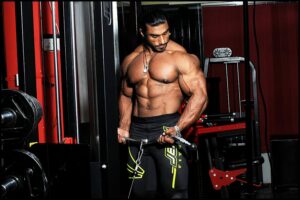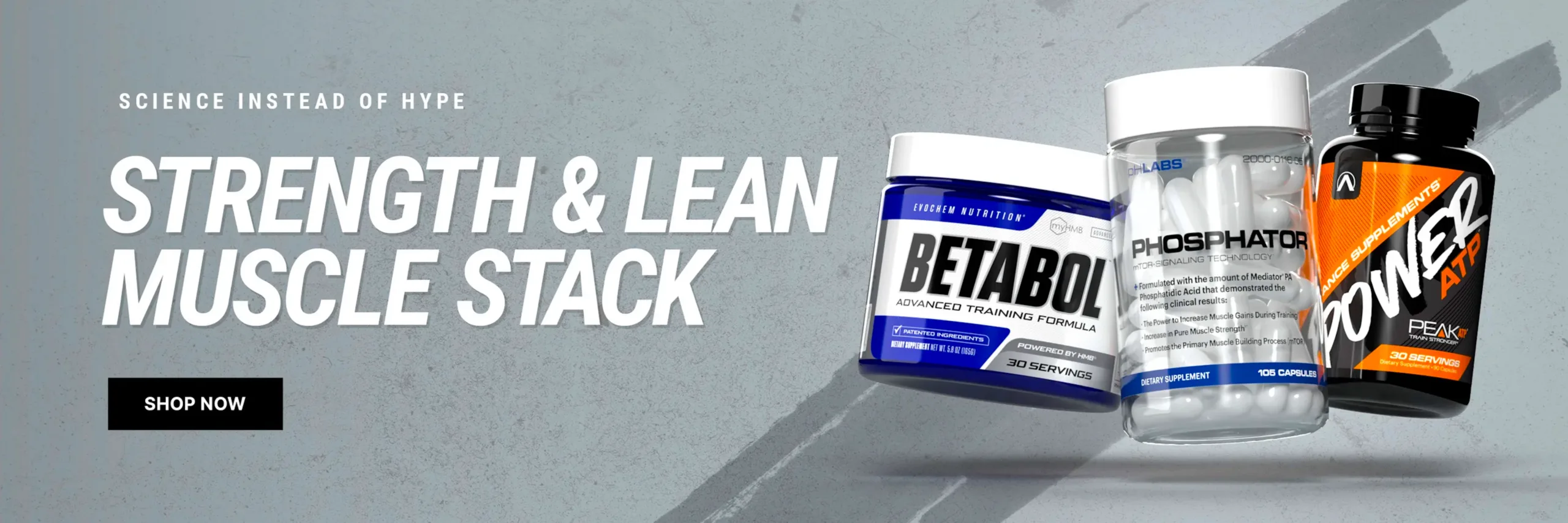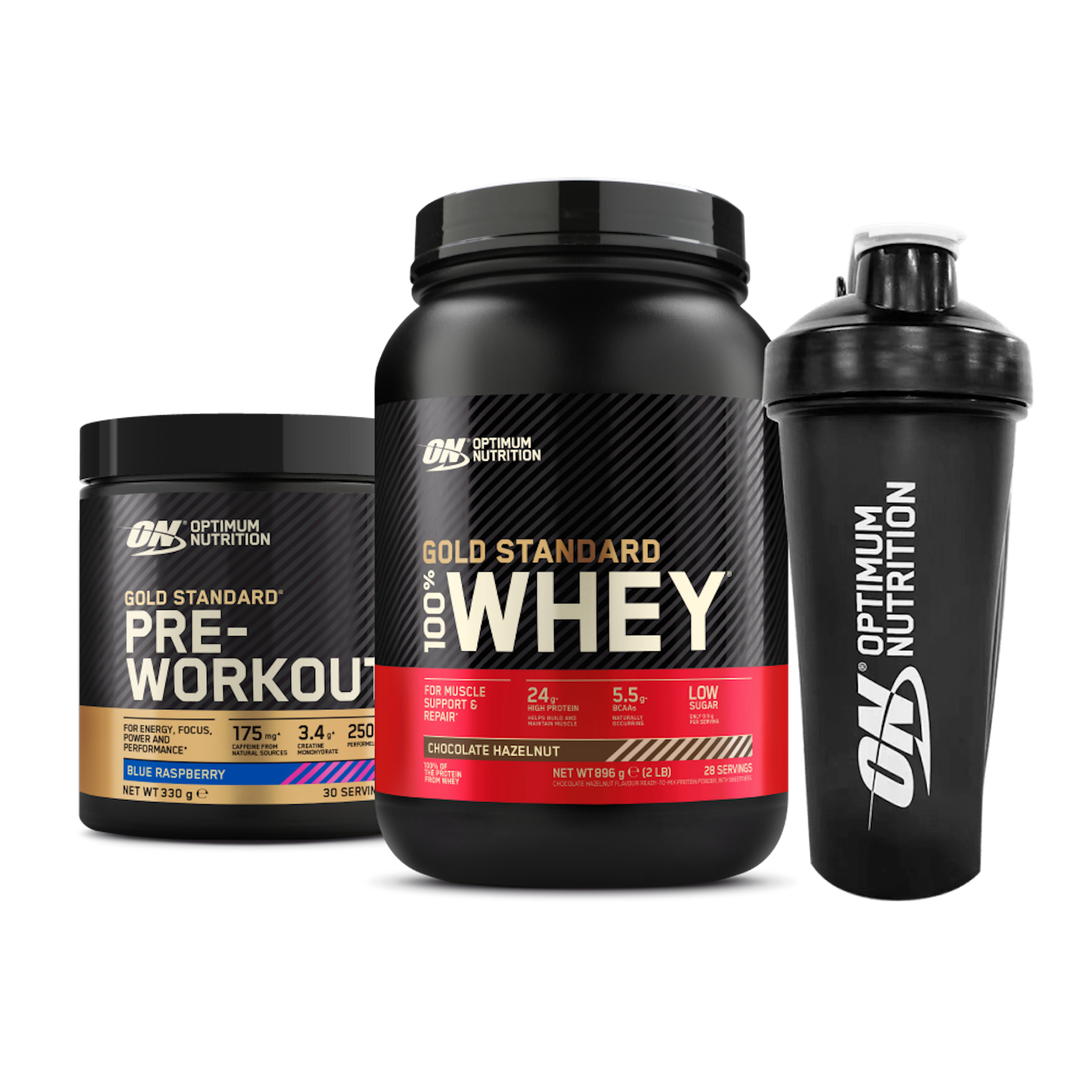You can learn a lot about how not to build muscle by paying close attention to the advanced guys in any gym. This list not only states the most common mistakes but how to fix them as well.
That’s the question. What’s your answer?
Dismiss the advice in this article and you are closing the door on gains. It’s time to stop being a pretender and start reaping some benefits from your efforts in the gym.
The following list is in no particular order.
-
1 – Your Primary Shoulder Exercise is Smith Machine Overhead Presses
I’m leading off this list with Smith machine overheads. When it comes to shoulder training this movement is a gym rat staple. It’s rare to find a barbell or dumbbell shoulder movement being used to attack the delts.
Smith machine overhead presses are probably the most shoulder-torturing exercise I’ve tried during my 28 years of lifting. And when I say torturing, I don’t mean it in a good way. Most experienced strength trainers I’ve talked to agree with this assessment.
Setting this danger factor aside, Smith machine presses are simply a cop-out; a half-hearted effort to train the shoulders. “There are plenty of other shoulder exercises that are better (and safer). Think I’m being too harsh? Why is it ok to hit the chest with a barbell exercise but not the shoulders”?
Growth Tip – Stop taking the easy way out and replace the Smith machine overhead press with a dumbbell or barbell overhead press variation. There are plenty to choose from.

Smith machine presses are simply a cop-out; a half-hearted effort to train the shoulders. There are plenty of other shoulder exercises that are better.
-
2 – Your Barbell Squats Look More Like WTF Squats
Although I am starting to see more and more lifters doing deep squats, most movements performed in the squat rack look more like WTF squats. Half squats, quarter squats, knees-in squats to a high bench; you name it I’ve seen it over the course of the previous year.
Despite the insane amount of squat form information on IFBNewsfeed.Org, Youtube, and the rest of the Internet, this movement continues to be slaughtered and mangled by lifters from sea to shining sea. Not only that, but the amount of weight being used is pathetically weak.
135-pound half squats performed with your knees in are not only a huge waste of time, but they will also hammer the living snot out of your knees. I’ve never seen developed quad mass on a lifter using this style of squatting and I never will. Why bother using an exercise that isn’t going to yield results?
Let it be known that half squats place MORE stress on the knees than deep squats. Because you are not hitting proper depth, the hamstrings are under-utilized. This imbalance the squat, placing more strain on the anterior muscles. The result? Unwanted stress upon the knee.
So there you have it. Lightweight half squats yield little muscle mass and are horrible for your knees. Ready to set this movement aside yet? I hope so.
Growth Tip – Hit Youtube and learn how to squat properly. Practice your squat form with a moderate weight, and slowly progress as you feel more confident with your form.
-
3 – Are You Really Still Doing Front Lateral Raises?
Yes, this is a serious question. You just performed 20 sets of bench presses so why in the heck are you hammering your front delts with more work?
Your front delts are worked hard enough when pressing. In fact, the bench press alone is such a potent front delt builder that many seasoned bodybuilders I know talk about having over-developed front delts.
Not only is direct front delt work rarely needed, but it also can contribute to shoulder issues. Most gym bros are already over-training the chest and front delts while under-working the shoulders and back. This creates a shoulder girdle imbalance.
When you create a strength and muscle imbalance in the upper body like this, you are setting yourself up for shoulder and joint issues.
Growth Tip – Instead of doing front raises, target your rear delts with extra work. Try using face pulls, bent over reverse flyes, or reverse pec dec.
- Save up to 70% on Vitamins & Supplements at eVitamins.com!
- Free Shipping on US orders over $49 USD and 5 lbs or less at eVitamins.com!
-
4 – Two Hour Training Sessions But Your Strength Levels Suck
Living in the gym isn’t going to help you if your strength levels suck. There I said it. Intervention over.
“Beast mode” without progressive overload is simply bro mode. Regardless of the training system, you are using, if you aren’t pushing for progressive overload in some form or fashion your workout is simply a calorie-burning activity. And probably a joint destroying activity as well.
If working hard and staying weak is your idea of a good workout, welcome to the land of no gains. Burning calories is not the same thing as building muscle.
To get as big as possible you need to constantly challenge yourself in the gym. The best way to do so is by pushing for more weight on the barbell, dumbbell, or machine.
Why do you think so many gym bros remain small? The obvious answer is obvious,
Growth Tip – Try to maximize each set. Push each set for as many reps as possible, stopping only if your form starts to deteriorate or if you think you might fail on the next rep.

Back exercises should be performed using the arms as hooks only. Concentrate on driving your elbows back instead of pulling with your hands.
Check Out Our List Of The Best Supplements For Building Muscle, Shredding Muscle, Recovery, Great Health, and Wellness products!
-
5 – You Call That a Hamstring Workout?
If the average gym rat performs any direct hamstring work at all, it’s usually unchallenging and ineffective.
The best way to kick off a quality hamstring growth session is with a tag team of deep squats and leg presses. After this point, there are several top-notch hamstring exercises to choose from. I recommend:
While I see about 25% of lifters working legs, I rarely see them challenging their hamstrings. Usually, they perform half squats or Smith squats followed by light and ineffective leg presses. This “quad work” is usually capped off with weak and pointless calf work.
“Leg day” over. So pointless, so few gains.
Growth Tip – Try the simple combination of stiff leg dumbbell deadlifts and leg curls. If stiff leg deadlifts are not to your liking, use reverse hack squats.
-
6 – “Arm-Centric” Lat Pull Downs Are Not a Potent Back Builder
Lat pull-downs can be a good back-building exercise. Lat pulldowns done improperly are simply another arm-centric movement that won’t yield much in the way of back size and strength.
Back exercises should be performed using the arms as hooks only. Concentrate on driving your elbows back instead of pulling with your hands. This will minimize bicep involvement while allowing you to move more weight, build a bigger back and get a better lat contraction.
Most lifters stick to lat pulldowns as their primary back-building exercise. It’s also not unusual to see trainees performing several pull-down variations; possibly V-bar pulldowns or behind-the-neck pulldowns. Heavy rows and deadlifts are typically no where to be found. Combine this weak back training approach with a poor shoulder workout (see above), and you have a completely unbalanced upper body that lacks power and aesthetics.
Growth Tip – A good back workout features at minimum a row and pull-down variation (or pull-ups). Make sure you concentrate on explosively driving your elbows back, regardless of the variables used.
- A1Supplements.com – America’s Favorite Supplement Store.
- $5.95 Ground Shipping On Any Purchase In The US! – Shop Now!
- A1Supplements.com – Lose Fat, Gain Muscle!
-
7 – Forearm/Grip Work When Your Back/Shrug/Deadlift Strength Sucks
Let’s get real here for a moment. If you’re training your forearms and grip strength but have never performed a deadlift, heavy barbell shrug or barbell row, you’re living in a fantasy world.
The base for any serious forearm size and grip strength training should be exercises of this nature. Then and only then, if your forearms remain weak and/or undersized, should you add indirect forearm work. Even then, this forearm work should be challenging and not simply 20-pound wrist curls over a bench.
Here’s something you may not know. Grip strength is tied in with back strength. If your back is weak, the brain will send a signal for you to release a weight because the imminent danger is lurking around the corner.
So, if you want more grip strength the best place to start is by building as much back strength as possible. This will not only make it less likely that your brain will cry uncle, but you will also be strong as a bear and building intense forearm size and grip strength due to the sheer intensity of the barbell work being used.
Growth Tip – If you are using rows, shrugs, and deadlifts but still have stubborn forearms, try heavy wrist rollers and barbell static holds. Both of these exercises are highly effective and take only minutes to perform.

Your front delts are worked hard enough when pressing. In fact, the bench press alone is such a potent front delt builder.
-
8 – Mind Muscle Connection 20 Pound Grunting and Screaming Curls
If you have small arms, the combination of moderately lightweight and the mind-muscle connection isn’t going to do you much good. You need heavy ass weight, also known as progressive overload.
To begin with, the biceps are a minor muscle group. If you aren’t challenging them then how can you expect to make gains? No, I am not talking about cheat curls here. I am talking about using the strict form with a focus on hammering out each set for as many reps as possible, adding weight when you can.
Every bro loves to curl. “Let’s be honest, we all want huge arms. There is nothing wrong with the mind-muscle connection. But if the mind-muscle connection is not tag-teamed with progressive overload it’s simply another exercise in futility”.
You can scream and grunt all you want. You can “feel the burn” and push for a pump without building much muscle. Don’t be a one-trick pony. Get your pump and mind-muscle connection on while making your biceps stronger.
Growth Tip – Save your pump work for the end of a biceps session. Begin with a quality bicep-building exercise like dumbbell or barbell curls and push for progressive overload. Once these sets are done, get your pump on.
-
9 – You Call That a Triceps Workout?
While everyone loves to hammer out reps on the bench press, the average triceps workout looks pathetic. The typical bro triceps session consists of lightweight skullcrushers, cable triceps extensions, and occasionally dumbbell kickbacks.
The triceps make up two-thirds of your arm size. They can take a lot of intensity and punishment, and for the most part, recovered rather quickly.
I recommend at least close grip bench presses and a heavy triceps extension movement like seated overhead two-arm dumbbell extension. If you want to finish off with pump work using cable extensions or kickbacks, that’s fine. Just make sure to challenge this beefy arm slab with heavyweight first.
-
10 – Calves Require Resistance Too
One of the most common complaints in the lifting realm is this: I can’t seem to get my calves to grow no matter what I do. Unfortunately, this “no matter what I do” rarely involves an insatiable focus on getting the calves as strong as humanly possible.
Your calf muscles are built to take a pounding. They are a muscle group suited for repetitive training. Because of this, repetitive training in the gym often doesn’t work very well.
I am not telling you to forsake high rep sets. Regardless of the rep scheme, you are using, try pushing each set for more reps and adding weight when you can. If this sounds like a common theme in my articles, you are catching on (and probably making gains).
Can you really expect your calves to grow if you’ve been using the same weight for the last 3 years? No. This “punishment” isn’t going to be enough to spur gains. Now if you get this same exercise up to 5 plates per side, the tides might actually turn and your small calves might morph into powerful bulls.
Growth Tip – If you’re having trouble growing your calves you might need more than progressive overload. Try training your calves 2-3 times per week and watch them grow.
Related Articles:
- “Build Muscle, Power, And Strength” With The Best Dumbbells Exercises For Legs
- How To “Build Muscle And Strength” Effectively And Painlessly: Try Out The 4-Day Split Routine
- Muscle Building Workout: “Build Muscle And Get Shredded” With This Amazing Workout
- Best Strategies “To Build Muscle Fast” For Effective And Longer Gains
- Can You “Lose Weight And Build Muscle” At The Same Time?

- Get a refreshing blend of vitamins, amino acids, and natural caffeine for a calm stimulation with LivPur ENERGY!
- Introducing 7-DAY CLEANSE by NU-TEK Nutrition®. This convenient yet potent cleanse features concentrated amounts of key herbs and botanicals! No bitter-tasting juices or bad-tasting powders
For More News And Daily Updates, Follow IFBNewsfeed.Org on Facebook, Twitter, and Instagram. Comment, Like, And Share With Everyone Who May Need To Be Updated With The Most Recent Fitness/Bodybuilding/Powerlifting And CrossFit News.






